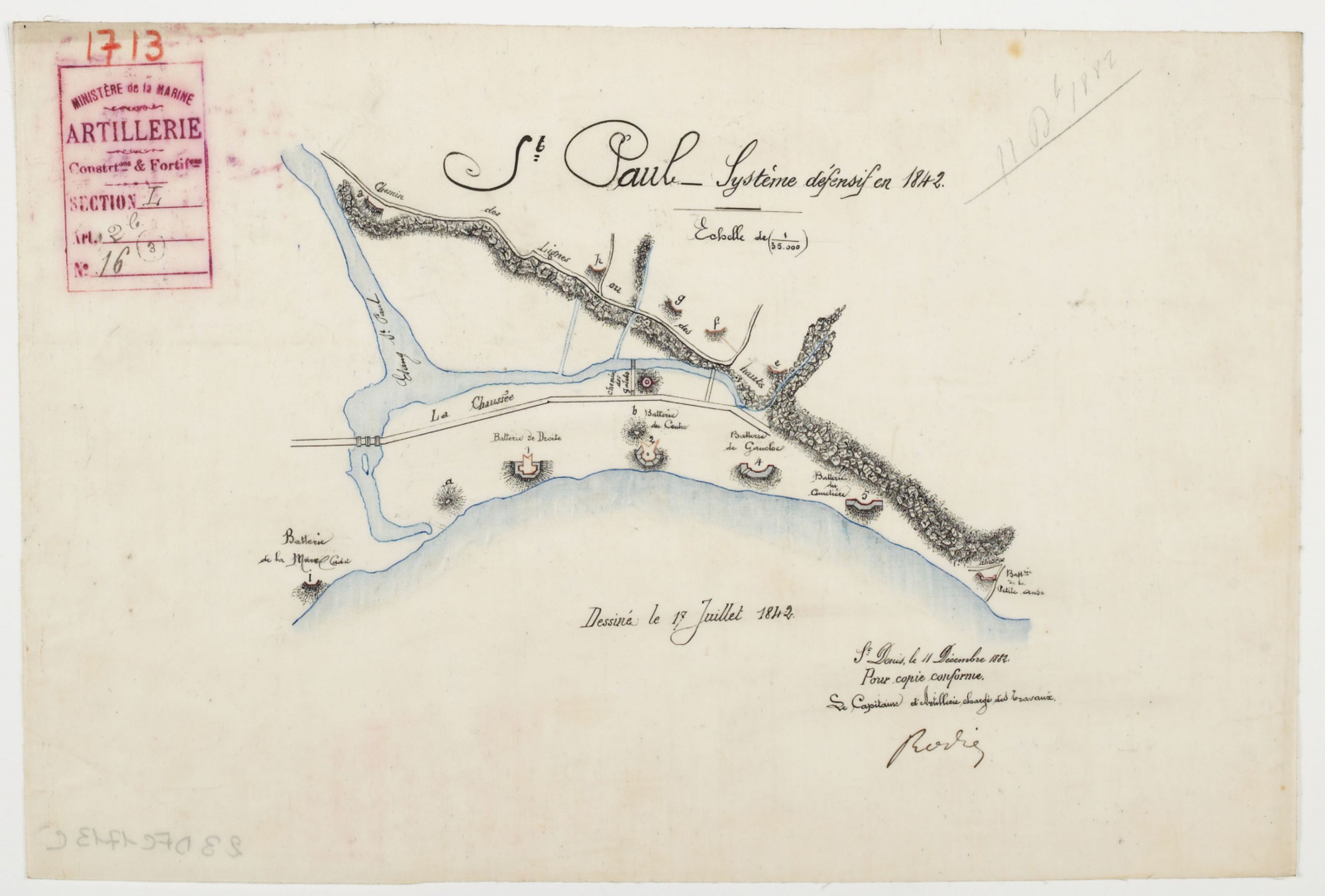
- Home
- Archaeology on Reunion Island
- Sites
- Saint-Paul
- "De Droite" battery
- Cilaos
- La Possession
- Saint-André
- Saint-Benoît
- Saint-Denis
- Saint-Joseph
- Saint-Leu
- Saint-Louis
-
Saint-Paul
- Bassin Vital
- Batterie “De Droite"
- Batterie “De l’Embouchure"
- Cap Champagne
- Chemin de Bernica
- Marin cemetery
- Colline du Théâtre
- Domaine de Villèle
- Eastern entrance, Section 3
- Glacières du Maïdo
- Plaine-aux-sables
- Plateau Picard
- L’Étang bridge
- Poudrière
- Route des premiers Français
- Bruniquel factory, indentured workers’ camp and hospital
- Usine de Grand Fond
- Saint-Pierre
- Saint-Philippe
- Sainte-Rose
- Sainte-Suzanne
- Salazie
In 2005, archaeologists dug test pits to confirm the existence and to describe the remains of the battery known as "De Droite" or "no. 1" flush with the sand and vegetation in the Baie de Saint-Paul.
Historical background
Although the first battery in Saint-Paul was built in 1735, a defence system was only built during the War of the Austrian Succession against England (1744–1748) and then the Seven Years War (1756–1763), mainly in Saint-Denis and Saint-Paul. Battery "no. 1" was built between 1806 and 1809 as part of the conversion of the Baie de Saint-Paul into a support base for Port-Louis on the Île de France, now Mauritius, on the orders of the governor of the Mascarene islands. This battery and battery "no. 2" were built closer to the end of the bay to further concentrate the coastal fortifications on Saint-Paul and to remove the batteries on the right bank of L'Étang.
Average-sized battery
Well conserved and spared by development activity along the coast, including a car park and a health walk, the battery is 83 metres long and 34 metres wide at its broadest point. The "De Gauche" battery, known as the largest in the Baie area, probably exceeded 100 metres. This suggests it had a capacity for seven pieces of artillery. Although archaeologists failed to identify the ground level and firing platform, they were nevertheless able to infer the use of barbette mountings due to the lack of embrasures in the parapet. This type of gun mounting is also the best adapted to coastal defence.




